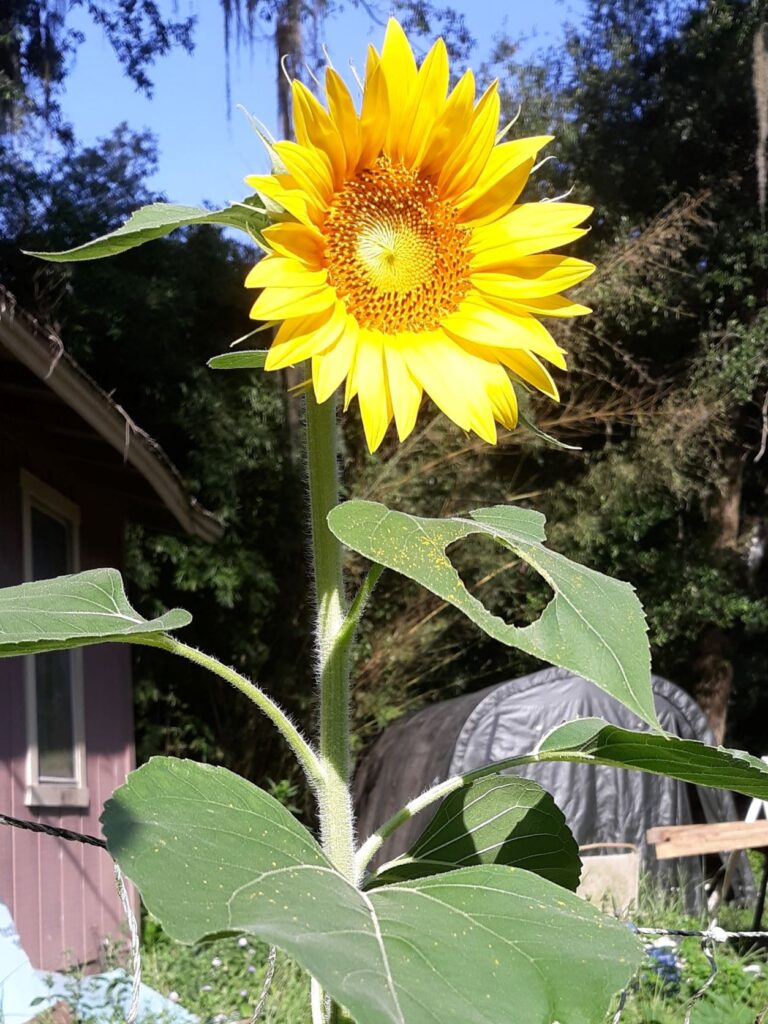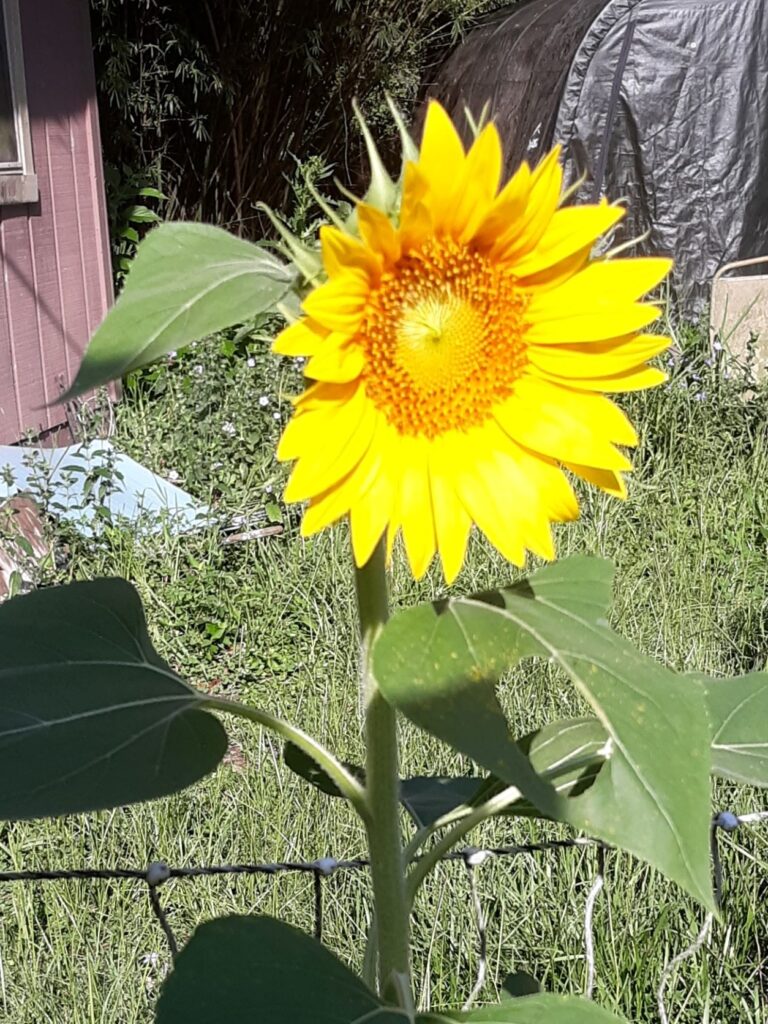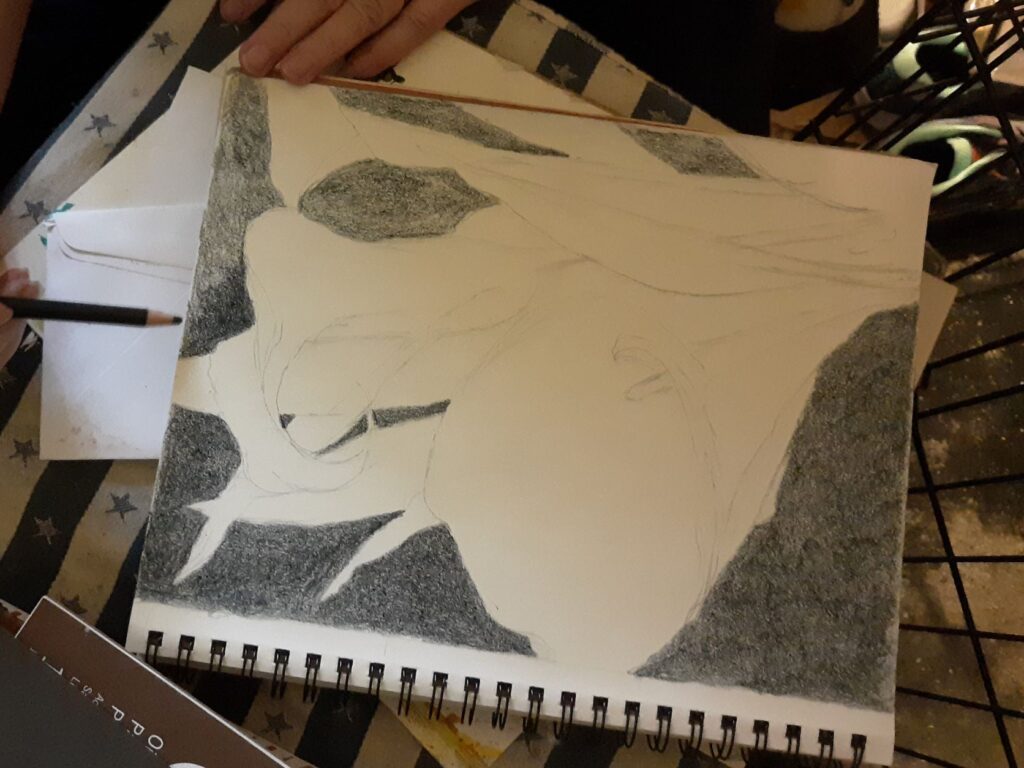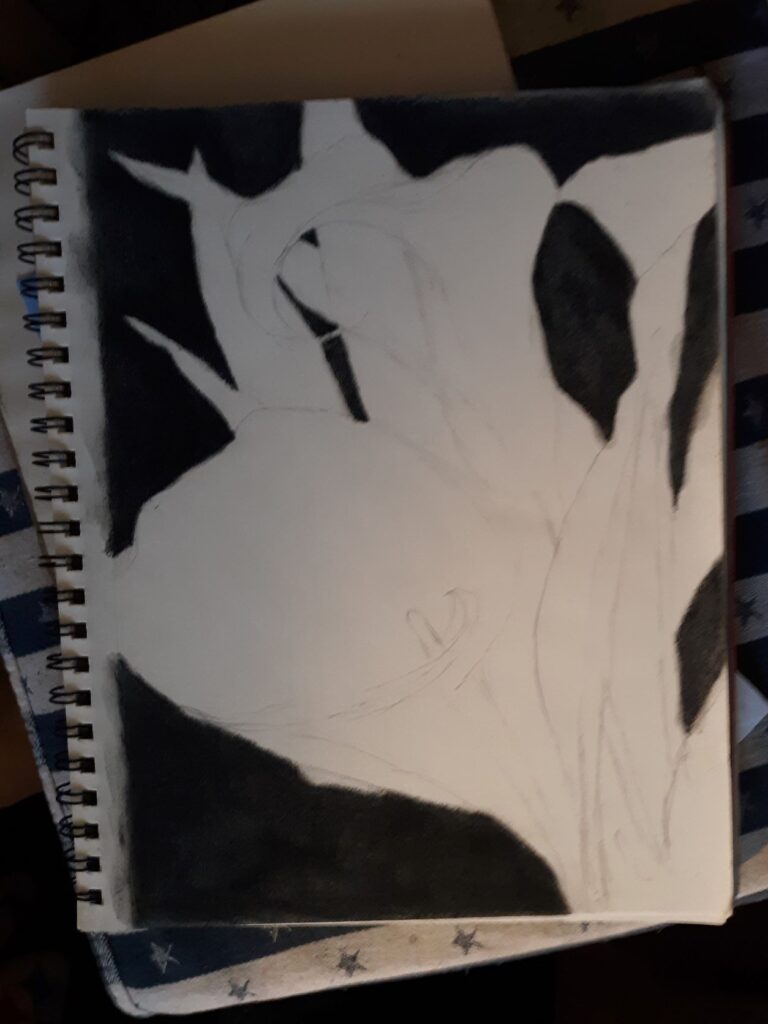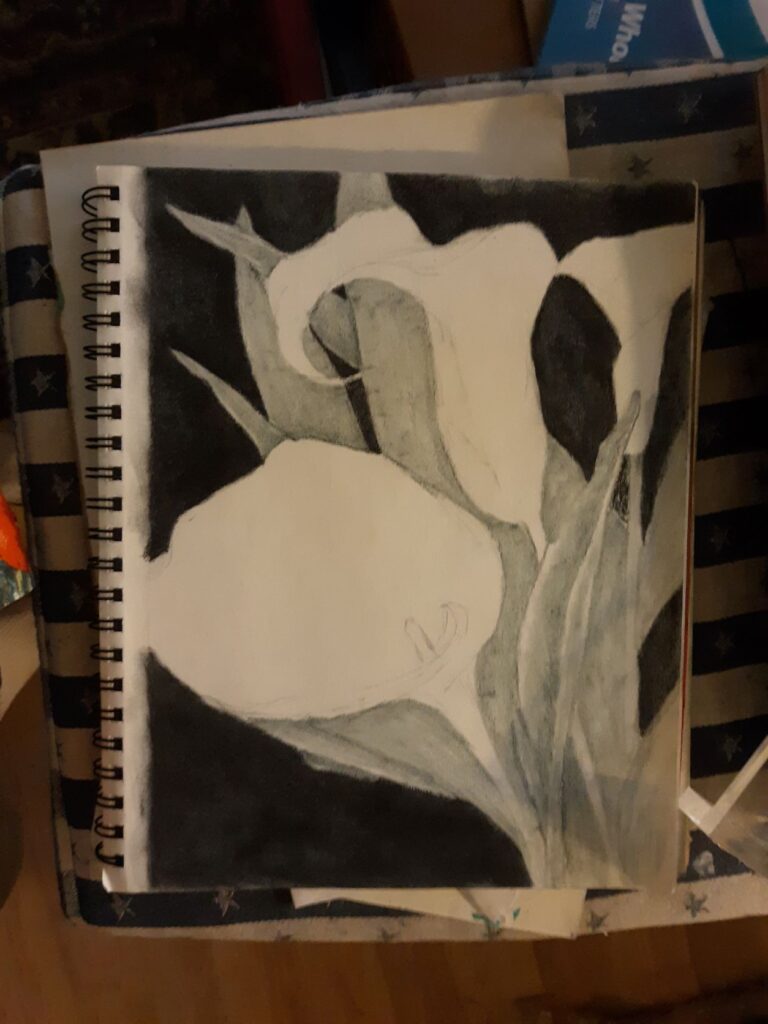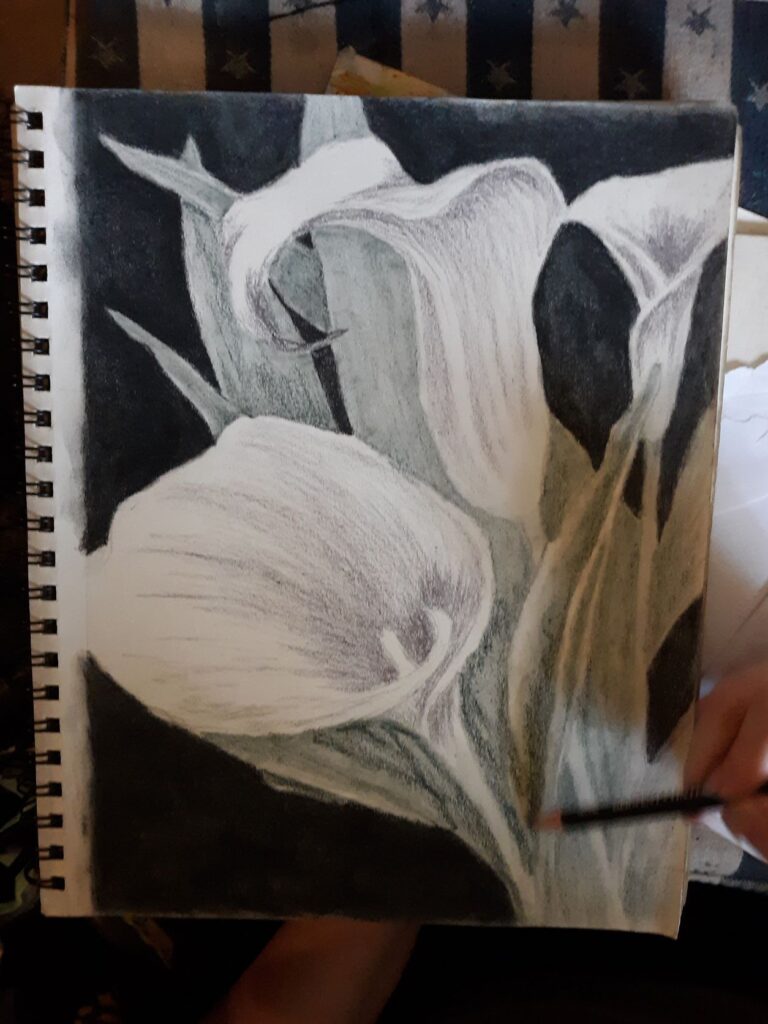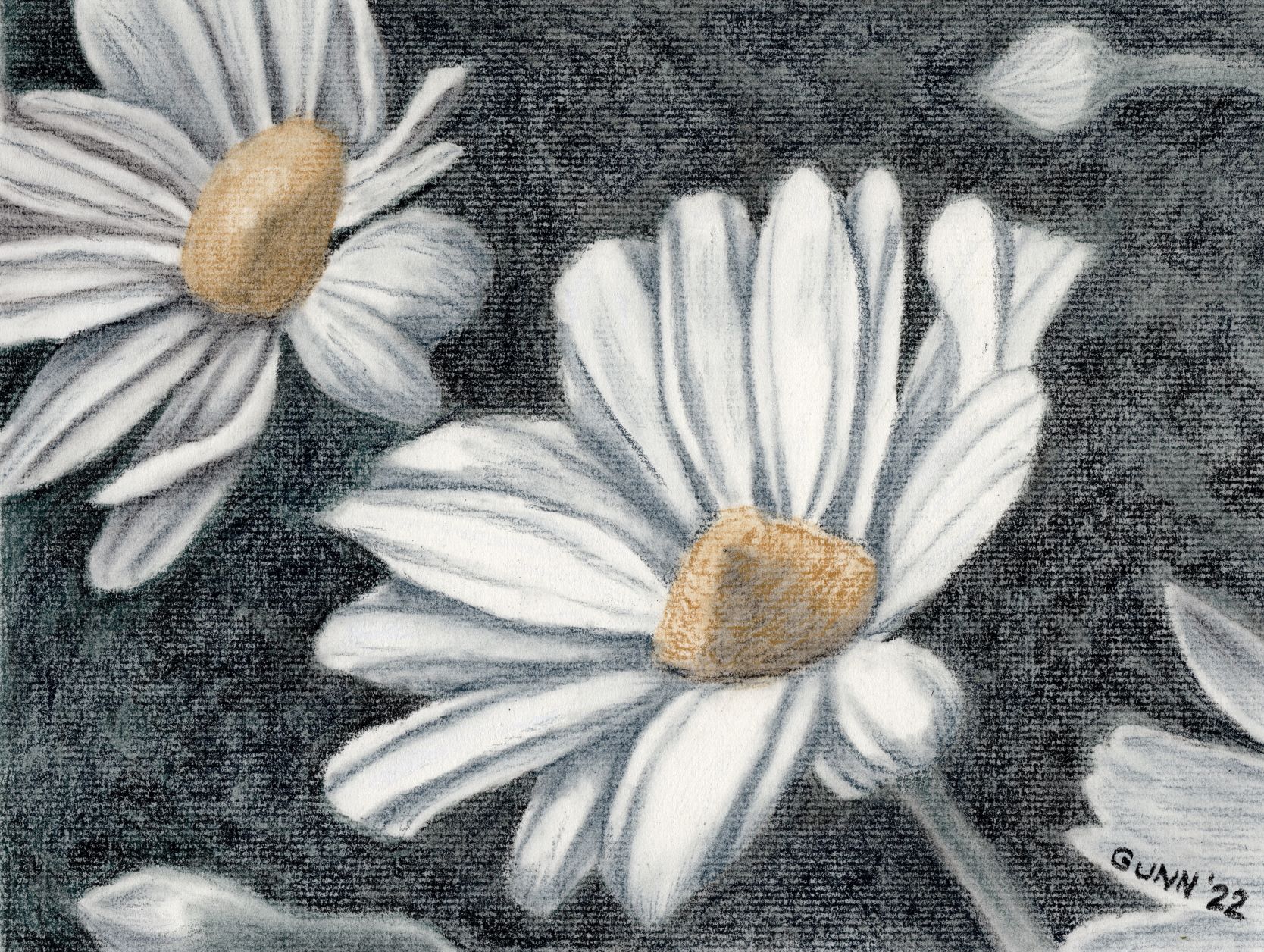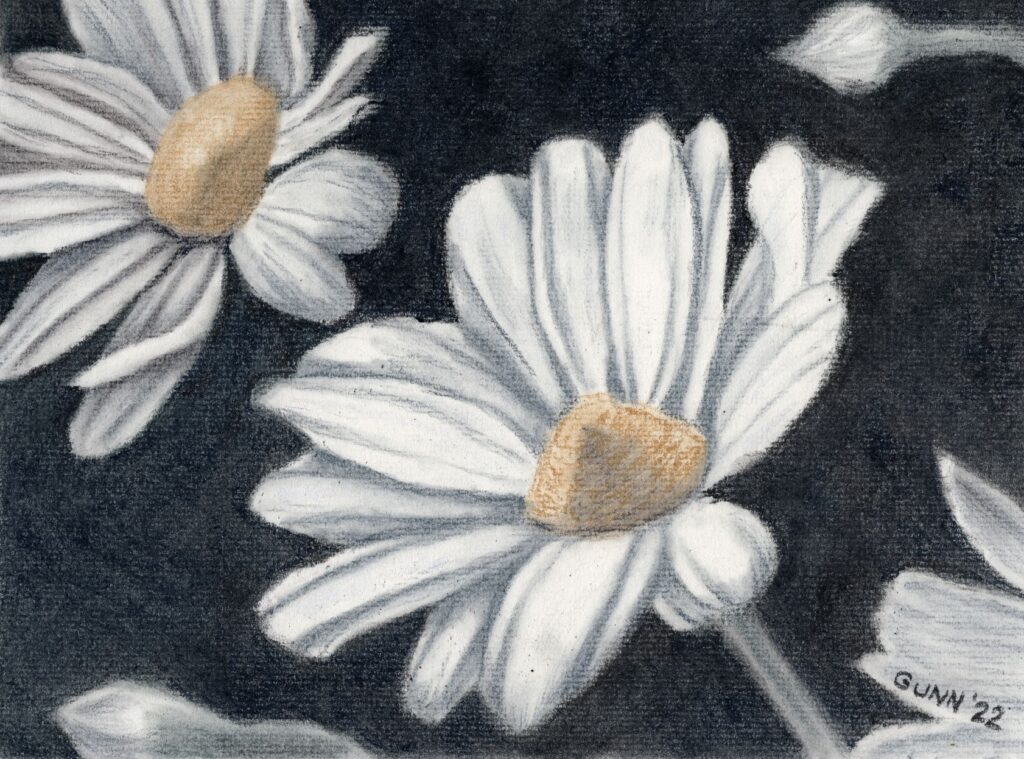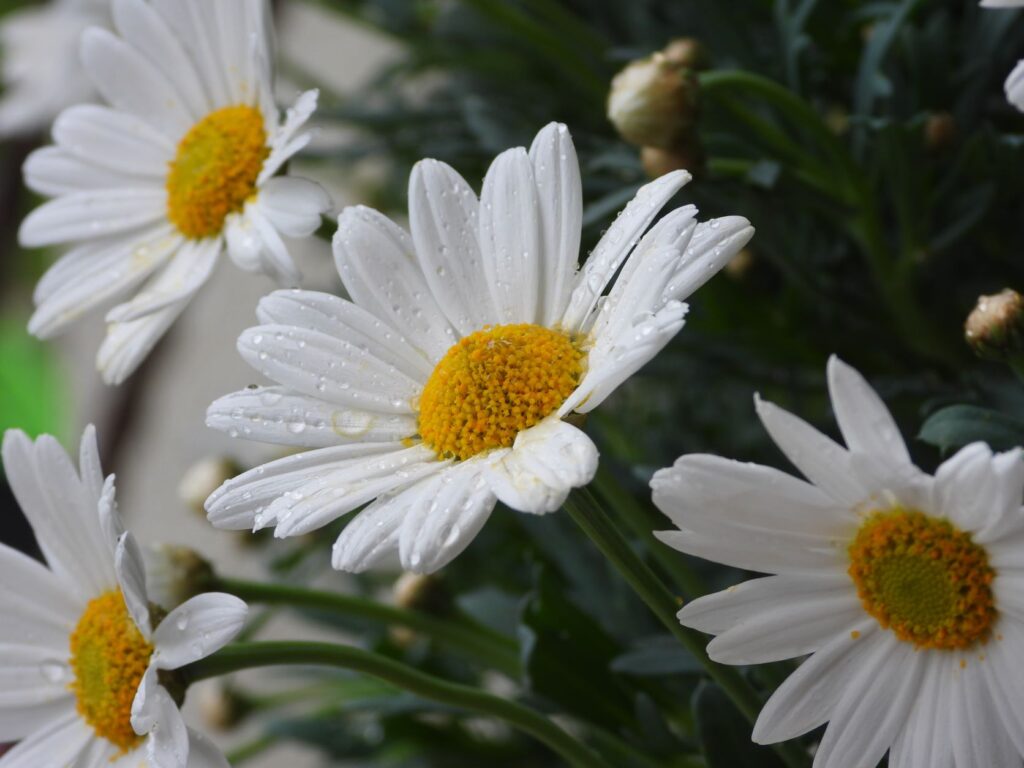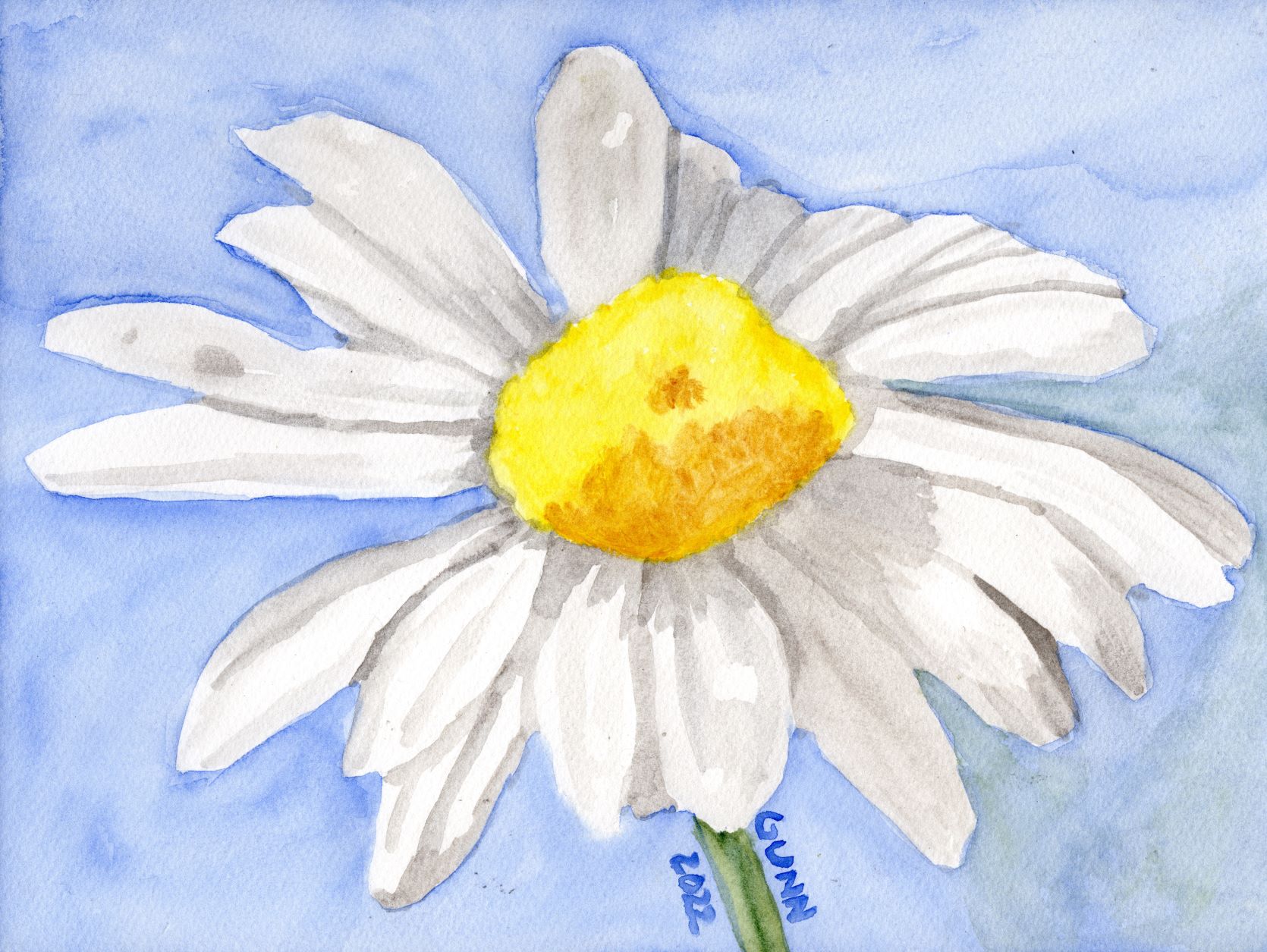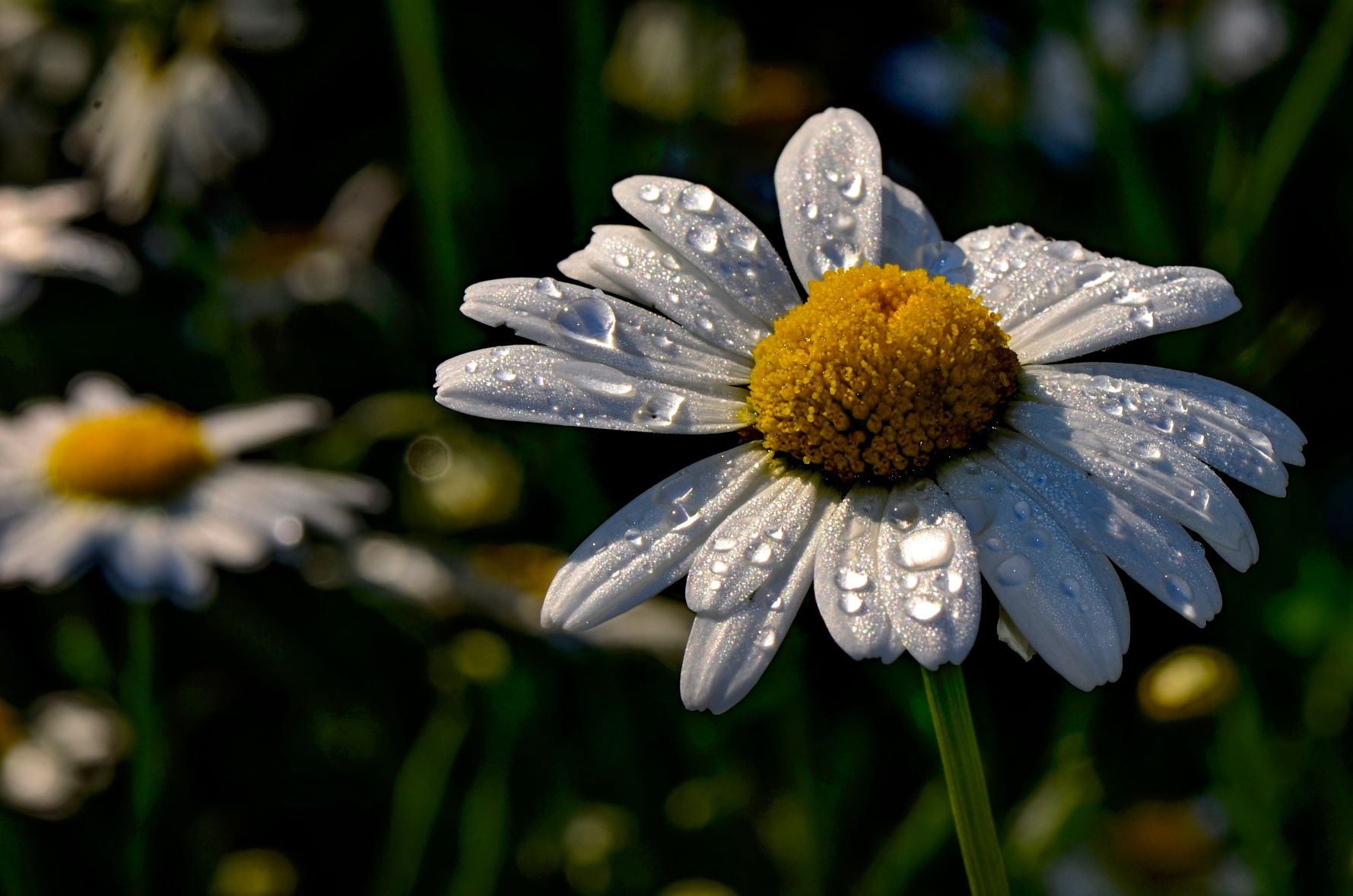I actually drew this ox-eye daisy for an art challenge back in June of 2021, but it got lost in the shuffle along with the horse head drawing in black charcoal I call Bridled. In fact, I drew it prior to Bridled, first piece of artwork for that challenge, and initially was not so pleased with it because it looks a bit different than previous drawings, even of flowers. At the time, I thought this was more of an experiment in mixed dry drawing media that didn’t turn out as well as I hoped, as it was the first time I mixed black traditional charcoal with splashes of color from pastel pencils, all on toned paper.
Inspiration behind the drawing
The inspiration behind this drawing is actually quite simple: I hadn’t drawn a daisy in ages, and wanted to see what I could do with it. I had recently purchased the Canson Mi-Tientes assorted colors pad, marked as being for pastels in particular though I had used a sheet for my Blue Dragonfly I did in colored pencil. So with an idea in my mind, I next went to Pixabay to hunt for a reference photo that I wanted to use, in the process creating a folder of nothing but daisies photographs. (Trust me when I say, there will be many more daisies in my artwork!) I found this one, then cropped it to my satisfaction, and then it was a matter of making marks with the traditional black charcoal until it looked like a daisy.

Experimenting with color alongside the charcoal
Not satisfied with just black marks on the toned paper, I then decided to mix my dry media, just to see how I liked the result. I had a small set of eight pastel pencils that came with a twenty-some year old drawing set, the kind that tends to sell well around the end of the year, and the set has white, yellow, blue, and a medium purple. I purchased a sepia toned oil charcoal pencil to try out, and used that for the shading on the ox-eye center. Then I fiddled some more with the shadows on the petals, first with blue, then with purple, then added in the white highlights, but leaving the midtone areas blank to allow the paper’s tone to show. Lastly, I picked up the bright yellow and used that for the highlights on the top of the flower’s center.
Purchase links for Ox-Eye Daisy drawing
The 9 x 12 inch original drawing is available through Daily Paintworks here. If you’d like a smaller or larger art print for your wall, you can order what prints you need through my Pixels store. If you’d like this printed on apparel or accessories, check out the various swag at my RedBubble shop. Personally I think it looks best on the classic coffee mug:
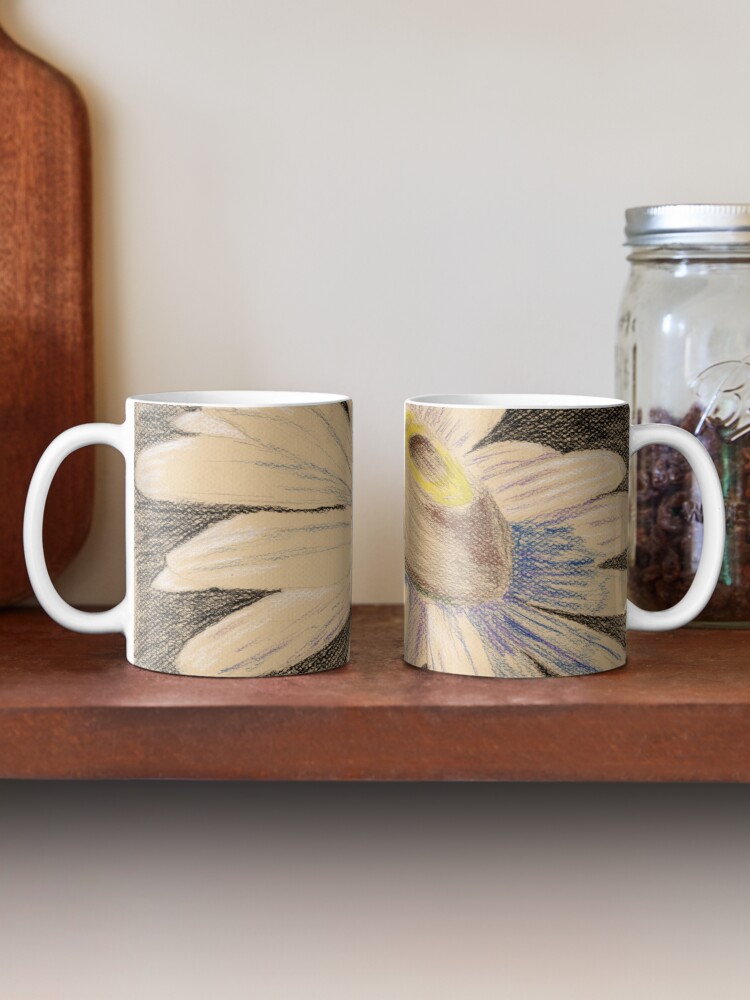
Evolution of my feelings about this drawing
As I have hinted at throughout this post, my feelings about this experimental drawing have changed over the fifteen months since I made it. Now when I look at it, I get the subtle impression of movement – and given the floral subject, that movement feels like a very gentle swaying in the slightest of breezes, almost nodding a greeting to the sun’s rays that must be hitting the flower in spots where I put the white on the petals and the bright yellow of the center. Usually I have all the subtlety of a wrecking ball, and am notorious for not picking up on hints, so this change surprised me when I reviewed this in preparation for the daisy challenge this summer.
More daisy artwork since then
It has not been that long since I did the short three day art challenge with the challenge theme being daisies, but I thought this was a good spot to mention those for newer readers. Working backwards, and very much related to this piece, is my Daisies in tinted charcoal. The day prior I did a single daisy in watercolor using only four colors, though if I redo that one I will see how it looks with only three colors. To start the challenge, and cover down on a different art challenge from a different source, I did a blind contour drawing of a partially-painted daisy that is still (!) on the easel, waiting for me finish. It made a good model to stare at as I drew without looking at the sketch pad. If you are trying to parse that statement … just go read the post. Seriously, blind contour drawings are an “in-context” thing.
Finally, here’s a small selection of daisy photos from Bob Decker’s blog archive. He seems to have just about every angle covered for this one flower.
As a final thought, here is a very accurate article from Inside Art about the truth behind a quote attributed to Edgar Degas: “Painting is easy when you don’t know how, but very difficult when you do.” It hit my inbox last evening, and boy howdy did it resonate with me! Something to think about as I settle in to work on more art today.

